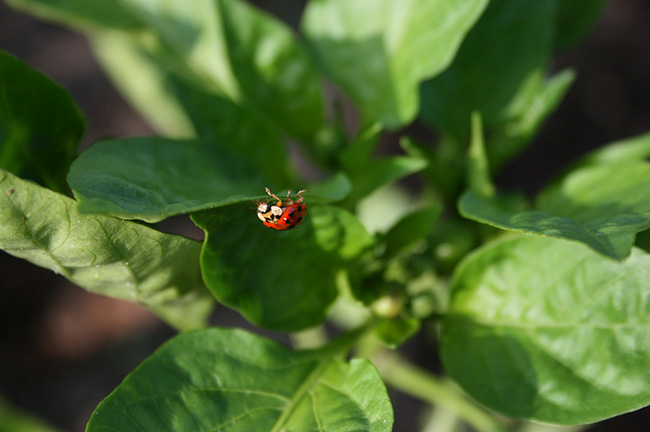
It was volunteering in her children’s Montessori school garden that gave rise to her new series Wild Tales & Garden Thrills, stories bursting with the real-life experiences of young gardeners. Children see the world from a totally different perspective than adults and Venetta knows their adventures will surely inspire a new generation to get outside,
and get digging.
When growing organically, the job of bug removal can be tricky. While others spritz chemicals from their spray bottle, or toss toxic powder over their garden beds, you refuse such tactics.
There’s no way you’re going to add potential hazards to your otherwise healthy garden. Organic methods simply require a bit more creativity when it comes to bugs.
Vigilance is required, as is the occasional “dispatch” of the little critters. Killing isn’t necessary when it comes to pest control for your garden. Instead, you can relocate the pesky invaders by taking them out and away from your garden where they’re unable to devour your leaves and vegetables. Hornworms and caterpillars are easy to catch—albeit difficult to spot—and easily plucked from the vine. That’s right. We’re talking about plucking them from your plants and placing them elsewhere. I’ll leave the “where” up to you, so long as it’s far and away from your garden.
Another nifty method of pest removal is to invite a few of your neighborhood ladybugs to move in. While you’re at it, ask a few frogs over. Let’s say we make it a party and invite a few friendly dragonflies to join the mix! Include some hoverflies, a few lacewings, and heck, give a shout out to a couple of gorgeous cardinals. Why?

According to the laws of Mother Nature, everyone needs to eat—insects, birds and amphibians included. Did you know that ladybugs absolutely love aphids, while frogs consume crickets and spiders like they’re going out of style? Dragonflies make a feast of mosquitoes and flies, and cardinals? I hear they feed grasshoppers to their young.
Have you ever heard of anything more glorious? I mean, grasshoppers can prove to be a horrible nuisance when it comes to plants. And I must confess, anything that keeps them on the run receives an extra star in my garden journal.
You can also combat bugs by whipping up some rather stinky concoctions. Garlic, peppers, and compost can be effective pest prevention. Seriously. Mixing these ingredients with water in a spray bottle will help keep the pests away. Bugs simply don’t like the smell. You can also attract pests by setting out a bowl of beer. Slugs and snails seem to have an affinity for the stuff but find it easier to get “in to” than “out of.” As are many things in life. Diatomaceous earth is another good choice for worms and caterpillars and is widely available in most garden centers.
And don’t forget companion planting! If you organize your garden accordingly, you can avoid many of these problems altogether. For instance, rosemary deters cabbage moths, dill attracts hornworms, marigolds repel whiteflies while lavender nourishes a host of beneficial insects.
These are just a few examples, but you can download my companion planting guide for a complete list of friends and foes in the garden and take heart in knowing your garden is chemical and poison-free.

